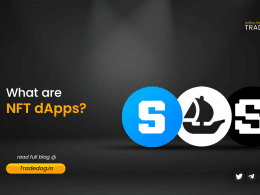Quick Links
How do you feel when some traders sit at their desks and regularly watch randomly forming candles? On the top of it, they draw lines and say this is a Breakout. Let’s Go ⚡️
Are you the one who does not get what is going on here? No worries, I will discuss an exciting strategy with you: price channel trading. Chart patterns help us to understand market sentiments. Simply put, the candles reflect the net buying and selling in the given time frame.
Traders use several strategies to increase their chances of coming out as a winning trade. Among them, channel patterns are widely used by traders. These patterns help traders make intelligent decisions based on the patterns that get formed. So, let’s dive right in!
What is a Channel Pattern?
Price channels are like hidden paths that show how the price of an asset moves over time. They form when we connect the price’s highest points (peaks) and lowest points (valleys) on a chart. Imagine drawing lines to keep the price within a specific range, just like how waves in the ocean stay within certain boundaries.
There are different kinds of price channels. Ascending channels slope upwards, showing that the price is gradually going up. Descending channels fall downwards, indicating that the price is slowly going down. Horizontal channels, on the other hand, show more sideways movement where the price stays within a relatively stable range.
Support and Resistance Levels
Support and resistance levels are critical within price channels. Think of support as a floor that stops the price from dropping further and resistance as a ceiling that prevents the price from going higher. These levels help traders spot possible turning points in the market. It’s like having invisible barriers that the price tries to break through.
Identifying Price Channels Pattern:
Let’s discuss how we can accurately find price channels in different market conditions. We use special tools and techniques for this. Trendlines are like rulers that help us draw the channel lines on a chart, showing the path the price has followed. Moving averages and Bollinger Bands are also helpful indicators that give us more information about price trends.
By looking at a chart, we can see the price moving up and down within the channel lines. Learning how to distinguish valid channels from false ones is essential. Sometimes, the price might break out of the channel and move beyond the boundaries. A valid channel is one where the price respects the support and resistance levels.
Trading Strategies within Price Channels:
Once we identify a price channel, we can use different strategies to make trading decisions. Let’s explore a few popular ones:
Breakout Strategy
This strategy involves waiting for the price to break out of the channel, which signals a potential new trend. We can take advantage of this breakout by buying or selling the asset, expecting the price to keep moving in the same direction.
Bounce Strategy
With this strategy, we look for opportunities to buy when the price touches the support line and sell when it reaches the resistance line. We expect the price to “bounce” off these levels and change its direction.
Trend Reversal Strategy
Sometimes, the price might break through the resistance or support line and start moving in the opposite direction. In such cases, we can take advantage of a possible trend reversal by entering trades in the new direction.
To confirm our trading signals within price channels, traders also use indicators like the Relative Strength Index (RSI) or Moving Average Convergence Divergence (MACD). These indicators give us extra information about the strength of the price movements within the channel.
How to trade Channel Pattern Breakout or Breakdown?
In the Horizontal Channel, the price is continuously trading within a range. This means that the buyers and sellers still determine whether the price should increase or decrease. Hence, this unsurety among them gets reflected as price trading within a range.
How to place the Breakout trade?
Entry: Price should have spent some time close to the Resistance zone. This means that the selling pressure is not currently active, and the buyers can take control and increase the price.
Always take the first position with half the amount you have allocated for the trade. This ensures you keep the whole invested capital if the trade reverses and there is a false breakout. The next part could be added if the price retests the Resistance zone and takes support from there.
Stop Loss: Few ticks below the candle could be an ideal Stop Loss position to get into the trade.
Target: The range of the pattern is generally the target.
How to place the Breakdown trade?
Entry: Price should have spent some time close to the Support zone. This means that the buying pressure is not currently active, and the sellers can take control and lower the price.
Always take the first position with half the amount you have allocated for the trade. This ensures you do not lose the whole invested capital if the trade reverses and there is a false breakdown. The next part could be added if the price retests the Support zone and takes support from there.
Stop Loss: Few ticks above the candle could be an ideal Stop Loss position to get into the trade.
Target: The range of the pattern is generally the target.
Conclusion
In conclusion, price channel trading strategies provide valuable insights into the movements of financial assets. By identifying breakouts and breakdowns from the channel pattern, traders can make informed decisions about when to buy or sell.
However, it’s important to remember that risk is always involved in trading, and no strategy guarantees success. Therefore, it’s crucial to approach price channel trading cautiously, continue learning, and practice risk management.
So, get ready to ride the waves of price channels in the financial markets, but always stay vigilant and remember that success in trading comes with experience and ongoing learning.













